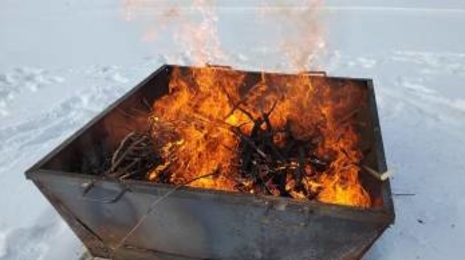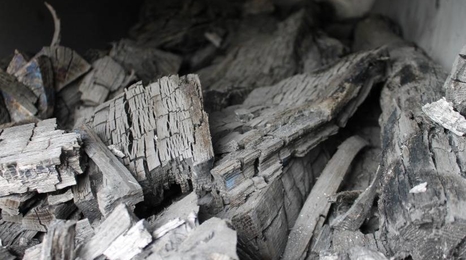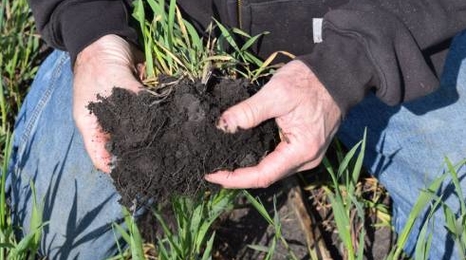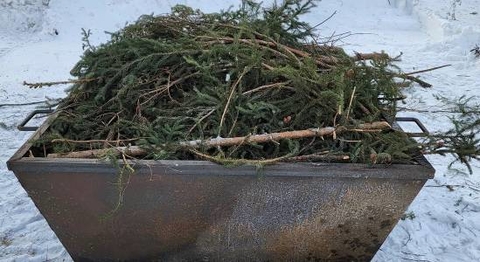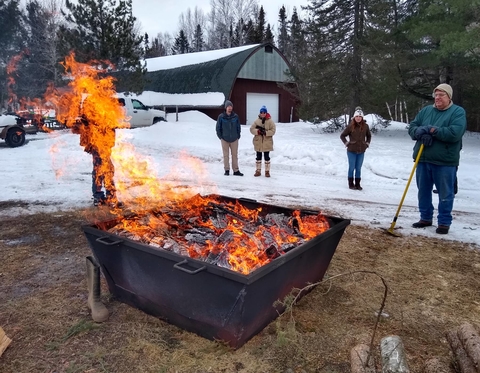A fiery sustainability practice is catching on across the state. It’s called biochar. If you haven’t heard of it, you’re not alone. While it has a long history in some indigenous cultures, the study and practice of biochar in its current form is relatively new. Today, the wide ranging benefits are creating interest from various groups across Minnesota.
What is biochar? Biochar is produced by putting wood chips, plant clippings, manure or other organic waste through the process of pyrolysis, or heating without oxygen. The burning is stopped before the materials turn to ash. The end product is a lightweight black charcoal made up of carbon. It may not look like much, but the substance is packed with potential. It has various practical uses, including: soil nourishment, reduction of greenhouse gas emissions, wildfire prevention, invasive species elimination, water treatment and can even be used as livestock feed.
Firing up Northeast Minnesota
In Carlton County, Brad Matlack says he’s always searching for new opportunities to implement conservation practices alongside local landowners.
“I was exploring ideas related to that and somebody said, ‘Make biochar.” And I said, ‘If I knew what that was, I would!’” he recalls with a laugh.
Matlack serves as District Manager for the Carlton County Soil and Water Conservation District (SWCD.) After learning more about biochar, he was sold on its variety of uses. With partnership and financial support from the University of Minnesota Extension’s Northeast Regional Sustainable Development Projects (RSDP), the Carlton County SWCD was able to build two kilns for processing biochar.
“In December there was heavy snow resulting in a lot of broken trees throughout the region,” says Matlack. “So the kilns can burn those potential wildfire fuels, which is a big thing. Also, we have mobilized our kilns to a couple of different buckthorn removal projects where we burned the cuttings right on site, which eliminates the chance of spreading the invasive species.”
In addition to use as a forest management tool, Matlack says the public can now rent a kiln to use on personal land. Northeast RSDP’s David Abazs says the project in Carlton County is trailblazing.
“I do not know of any other county in Minnesota doing what Brad and the SWCD have done with the portable kiln,” says Abazs. “It provides landowners the opportunity to make biochar for amending their soil, creating microbial habitat and nutrient retention along with preserving carbon longer term. It’s a win-win!”
For Matlack, the project’s most important outcome boils down to one thing.
“For us it’s about helping people and helping landowners implement conservation practices, and at the homeowner level, these are good solutions.”
Fanning the flames
Biochar is taking hold throughout the state. In Central Minnesota, there is interest from local produce growers and regenerative farmers to use biochar to enrich soil. So much so that the Sustainable Farming Association of Minnesota Central Chapter recently teamed up with Central RSDP to research biochar production. Stoking the embers of past U of M Extension research, the project team recently published a report focusing on Minnesota’s biochar production.
With interest flaring up throughout Minnesota, RSDP is working to add fuel to the fire. Joining together the growing coalition of biochar partners, RSDP is helping to launch the Minnesota Biochar Urban & Rural Coalition. The group hopes to instigate larger biochar research efforts and organizational needs going forward. Abazs says he’s hopeful that biochar will eventually catch on, in practice and in name.
"Throughout the state, there are large amounts of organic waste available. In wrestling with the challenges of sustainability and climate change, biochar can be part of the solution.”


